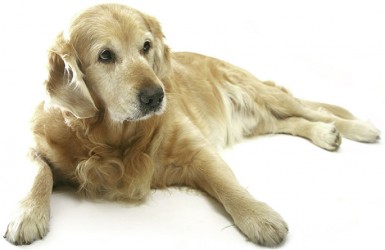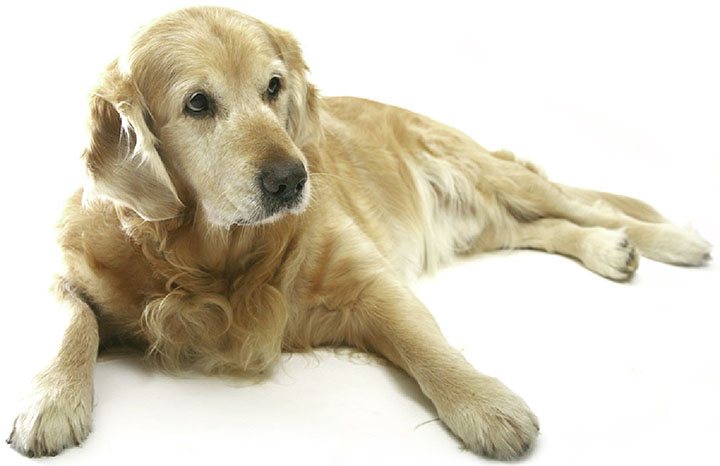Continued from last week
As was promised last week, we will deal with a condition known as ‘Hygroma’ or, as some scientists refer to it, a ‘False bursa’ or ‘bursitis.’
 Before we commence with the Hygroma/bursitis, I should mention a condition that is closely related to and possibly a precursor of the Hygroma problem. I am referring to the roughness/swelling on the elbows of seemingly all dogs in Guyana (especially the big/heavy ones). This ‘hard skin’ (callus) emerges because of the contact of the skin with hard surfaces (concrete, hardwood stairs/verandahs, and kennel floors made of hard wood, etc). The constant rubbing of the elbow skin on the hard surface can develop into quite unsightly, hairless, rough and hardened (sometimes bruised and bleeding) skin.
Before we commence with the Hygroma/bursitis, I should mention a condition that is closely related to and possibly a precursor of the Hygroma problem. I am referring to the roughness/swelling on the elbows of seemingly all dogs in Guyana (especially the big/heavy ones). This ‘hard skin’ (callus) emerges because of the contact of the skin with hard surfaces (concrete, hardwood stairs/verandahs, and kennel floors made of hard wood, etc). The constant rubbing of the elbow skin on the hard surface can develop into quite unsightly, hairless, rough and hardened (sometimes bruised and bleeding) skin.
I mentioned the callused skin as being located in the superficial (external) elbow area. But in fact any pressure point where the bone (just under the skin) is in constant friction with a hard surface will result in these rough, hairless swellings, for example on the lateral hind leg joint areas.
This problem, once it emerges, is difficult to remove. One could rub the affected skin with a lubricant (vaseline, oils, etc, to which you may add some yellow sulphur powder). If the bruised surface is infected, your vet may advise on the introduction of antibiotics and/or anti-inflammatories (steroids) into the treatment regime. Really, we should be thinking prevention. For example, we could cover the resting surface of the kennel with a sponge (mattress). The sponge, of course, has to be sanitized often.
Hygroma/bursitis
Hygroma afflicts large breed dogs including, but not limited to, Great Danes, Mastiffs, Newfoundlands, Greyhounds, Rottweilers, Irish Wolfhounds, Dalmatians and Dobermans.
The word Hygroma (of Greek origin) can literally be translated as a moist tumour. It is the name applied to a swelling occurring in the area of the elbow joint (sometimes elsewhere as well – eg the hock or the knee) in dogs. I have never encountered a Hygroma in cats. Perhaps they are too smart to lie down for long periods on a hard surface; besides they do not weigh much.
 A Hygroma growth is a fluid-filled sac that is formed mostly in the elbow area. Veterinary scientists believe it is caused by the dogs irritating the elbow, by lying on hard surfaces, or by the dog favouring one elbow over the other when lying down. The sac forms below the skin and feels firm but is yielding and somewhat mobile within the loose skin.
A Hygroma growth is a fluid-filled sac that is formed mostly in the elbow area. Veterinary scientists believe it is caused by the dogs irritating the elbow, by lying on hard surfaces, or by the dog favouring one elbow over the other when lying down. The sac forms below the skin and feels firm but is yielding and somewhat mobile within the loose skin.
Usually, dogs develop Hygroma when they are young. It seems that young dogs enjoy lying on hard surfaces. But later, it comes back to haunt them as they get older.
Hygroma, or elbow bursitis, has a similar expression in humans. Please note that the ‘bursa’ is a liquid filled sac in the elbow to help the skin slide over the elbow. When the elbow is damaged or hurt, bursitis (Hygroma) is the result. At first, the bursa may not be painful; however, as the dog ages, it can become very sore and swollen, to say nothing of being unaesthetic. Eventually it can become ulcerated and harm the joint and bone.
Naturally it’s better to prevent this occurrence by always providing a soft resting place on which the dog can sleep or relax.
There are products (beddings or dog resting pads) on the commercial pet market that can assist in alleviating this condition (you may refer to the website dogcheapsleeps.com). But I have to warn you that these beddings do not always work, and some dogs refuse the comfy dog beds or pads, preferring the cool, but hard, tile or greenheart flooring. Bored dogs can even shred their bedding just for something to do; they still end up on hard surfaces. Even dogs who always sleep on soft surfaces have been known to exhibit Hygromas. Very perplexing and frustrating.
The conventional veterinary Hygroma treatment is to drain the fluid with an 18 gauge needle and syringe (after thorough and functional sanitizing of the area) then pressure wrap the leg to stop the swelling in the elbow from reforming. Once the pressure wrap comes off, the swelling sometimes returns. Of course, I would advise that you do not try this by yourself. This is the vet’s job. The other Hygroma treatment is invasive surgery, which no owner wishes to approve, as the first intervention. If an infection or ulceration sets in, surgery is the only option.
Before drain treatment
An untreated Hygroma can develop into in a large enough swelling that stresses the surrounding skin and may become an open wound with the possibility of infection that is much more difficult to treat. In most cases a Hygroma is a once in a lifetime occurrence for an animal, but other individuals can exhibit repeated bouts of Hygromas.





